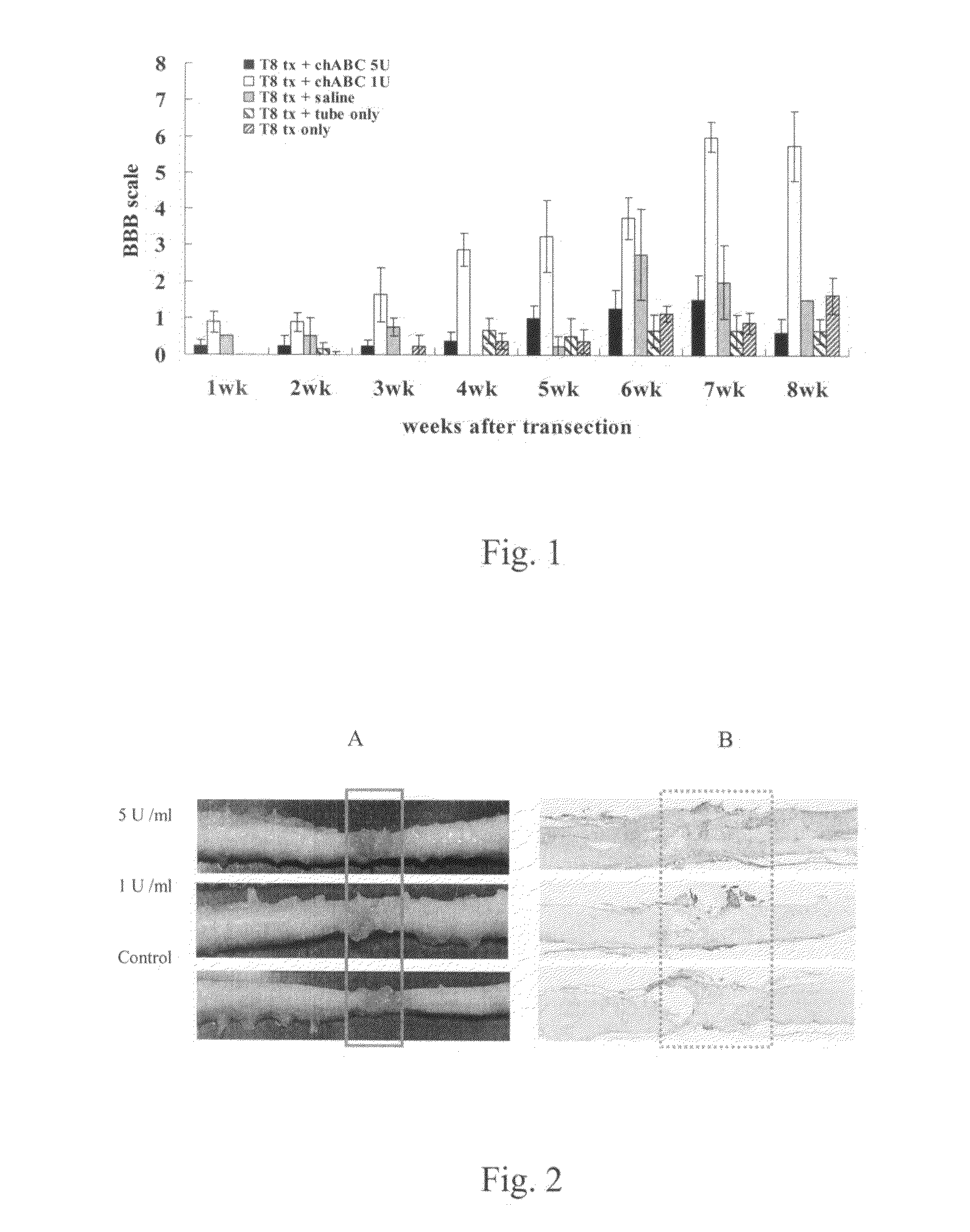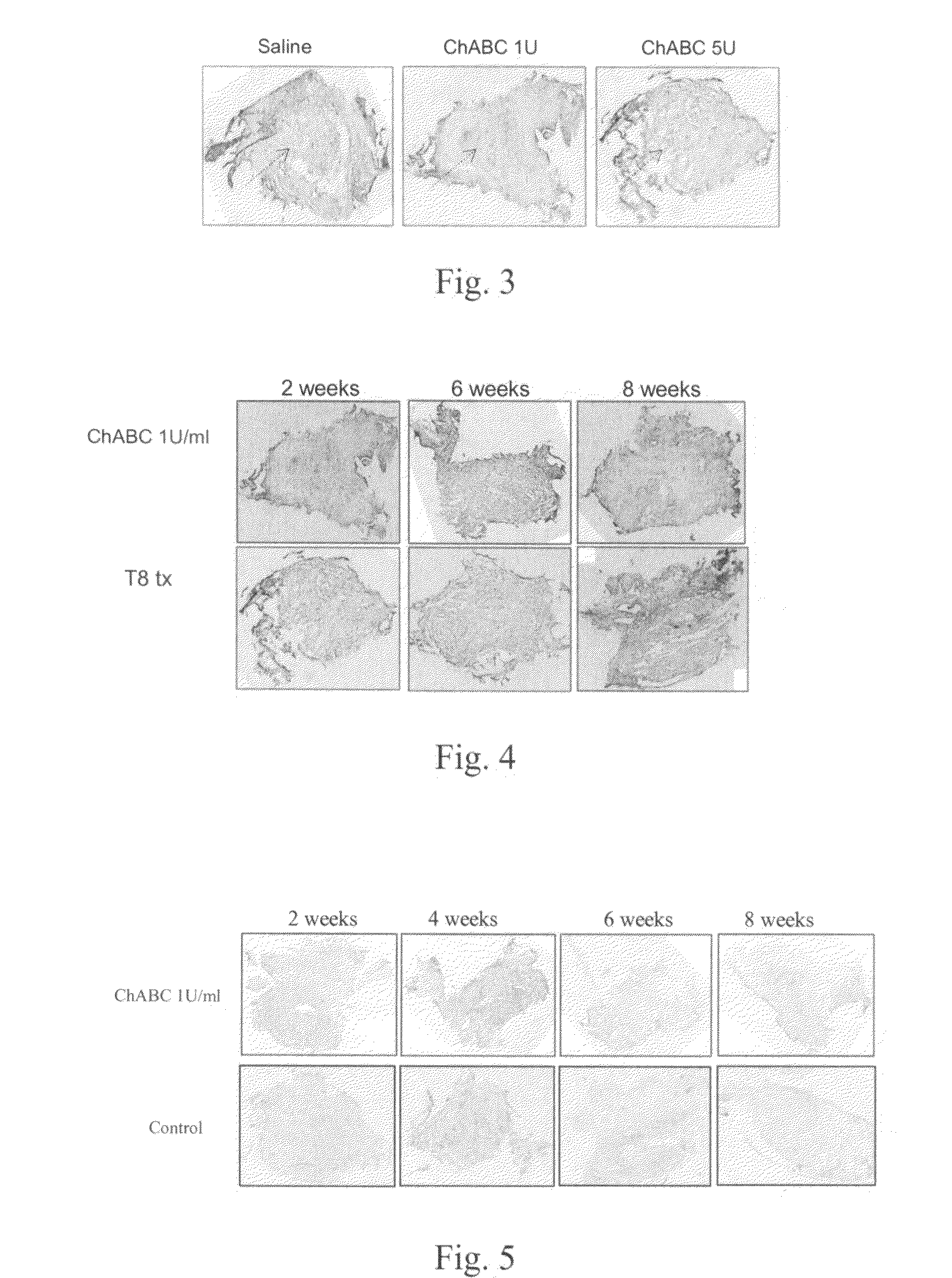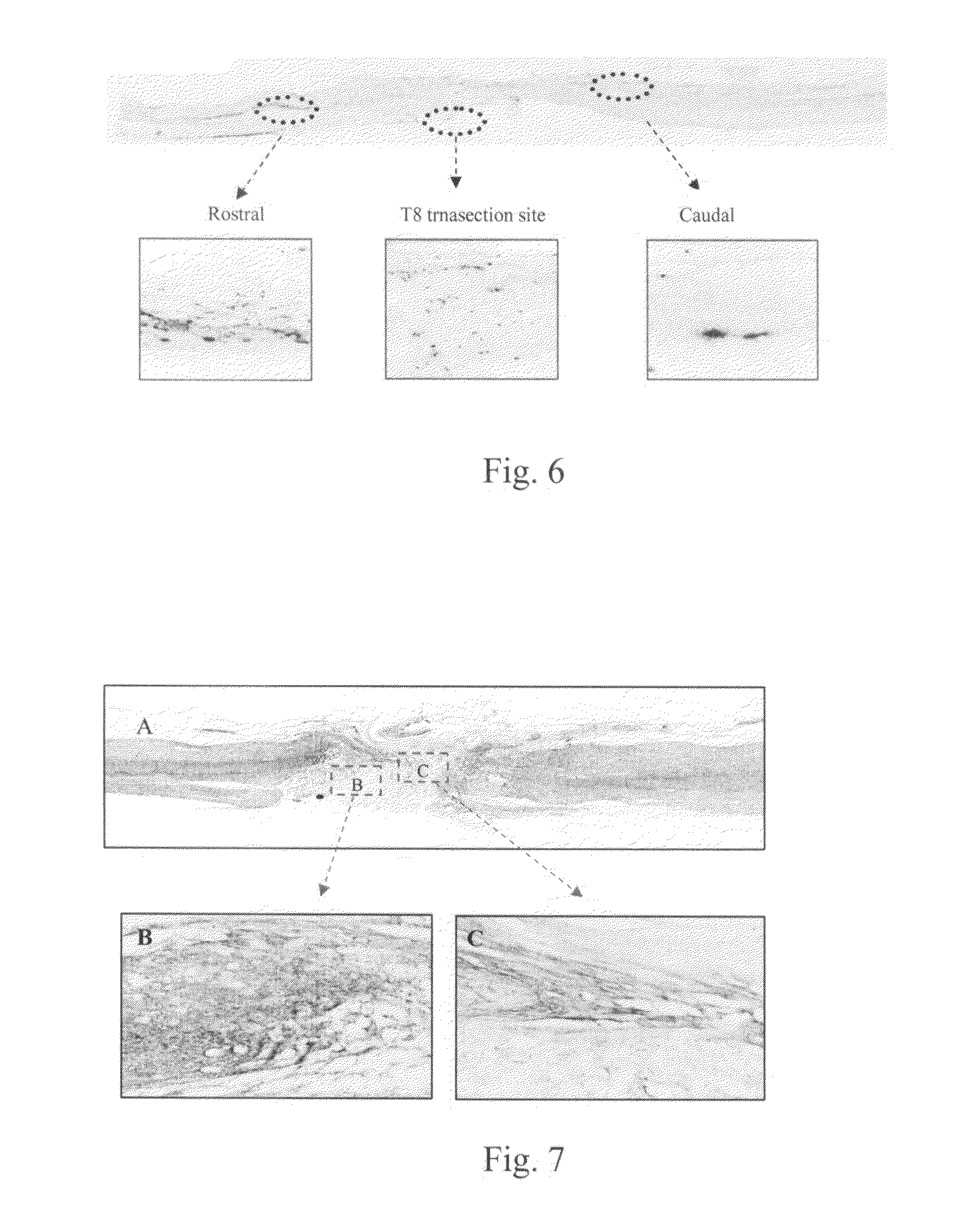Method for promoting axonal re-growth and behavior recovery in spinal cord injury
- Summary
- Abstract
- Description
- Claims
- Application Information
AI Technical Summary
Benefits of technology
Problems solved by technology
Method used
Image
Examples
example 1
The Insertion of Catheter and Infusion of Chondroitinase ABC after T8 Complete Spinal Cord Transection
[0041]Female Sprague-Dawley (SD) rats (each weighed 250 to 300 g) were used in the experiment. All surgeries were done under inhalation anesthesia with isoflurance and above homoeothermic blanket for keeping body temperature at about 37° C. The skin over foramen magnum was prepared and a longitudinal midline incision was made to expose the magnum and C1 lamina. The epidural space was created just above the C1 lamina and the catheter was inserted to reach the T8-T9 level. The incision was closed layer by layer and the catheter was externalized for infusion of chondroitinase ABC.
[0042]One week after catheter insertion and the confirmation of normal hindlimbs movement, these animals received T8 total laminectomy to expose the spinal cord and the inserted catheter at T8 level. The complete transection of spinal cord was done by lifting up both stumps for the completion of spinal cord tr...
example 2
[0044]All animals received behavioral testing every week post-surgery for 8 weeks. All behavioral tests were videotaped and two examiners who participated in behavior evaluation were blinded to each group. The hindlimb locomotor's behavior of rats was evaluated by the Basso, Beattie, Bresnahan (BBB) open field locomotor's test. Each session lasted 5 minutes. The open field locomotor's activity score ranging from 0 to 21 (0 for no movement, and 21 for normal movement) was determined by observation and scoring of behaviors involving the trunk, tail and hindlimb.
[0045]Referring to FIG. 1, there were statistical differences in the hind limbs locomotor's function evaluation between rats treated with CHABC 1 U / ml (T8 tx+ChABC 1 U), ChABC 5 U / ml group (T8 tx+ChABC 5 U) and the control groups (T8 tx+saline, T8 tx+tube only and T8 tx only), 3 weeks after surgery and CHABC treatment, and the differences persisted up to 8 weeks and longer.
example 3
Anterograde Labeling of Axons Crossing the Transection Site
[0046]Following 8 weeks post surgery, the female SD rats were anesthetized under inhalation of isoflurane. The spinal cord was exposed over the T10 level and 4% WGA-HRP (wheat germ agglutinin-horseradish peroxidase) was injected into the motor cortex of the brain via a micro-syringe. Three sites (to disperse injections on each side 0.24 μl×3) were injected by a slow pumping system. The animals were sacrificed for transcardial perfusion with 4% paraformaldehyde under anesthesia two days after microinjection. The spinal cord, together with brain stem were removed, post-fixed and cryo-preserved in 30% sucrose overnight for serial section. The spinal cord was sectioned longitudinally and the brain stem was sectioned coronary at about 30 μm thickness.
PUM
| Property | Measurement | Unit |
|---|---|---|
| Volume | aaaaa | aaaaa |
| Volume | aaaaa | aaaaa |
| Composition | aaaaa | aaaaa |
Abstract
Description
Claims
Application Information
 Login to View More
Login to View More - R&D
- Intellectual Property
- Life Sciences
- Materials
- Tech Scout
- Unparalleled Data Quality
- Higher Quality Content
- 60% Fewer Hallucinations
Browse by: Latest US Patents, China's latest patents, Technical Efficacy Thesaurus, Application Domain, Technology Topic, Popular Technical Reports.
© 2025 PatSnap. All rights reserved.Legal|Privacy policy|Modern Slavery Act Transparency Statement|Sitemap|About US| Contact US: help@patsnap.com



